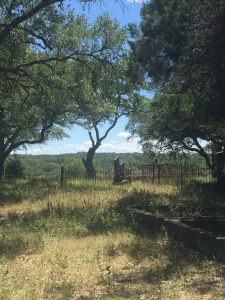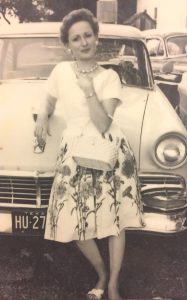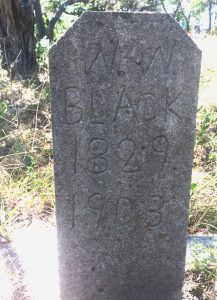
My grandmother, Marvalee, was born and raised on a South Texas dairy farm. Spending my summers with her growing up, she told me family stories of the hardships her family and ancestors endured while farming in the dry and hot Texas hill country.
In one tragic story, my great-great-grandparents, Thomas and Wilhelmina (Sachtleben) Black, faced the loss of two children consecutively. First, they lost 10-year-old Freddie to a rattlesnake bite in 1914 and, then, 14-year-old James to a ruptured appendix the following year. Thomas Black blamed himself for the death of his two sons and carried the guilt with him for the rest of his life.

My grandmother was very close to her mother’s father, “Grandpa Black,” who lived with her, her parents, and five siblings in their one-room home when she was young, but she knew very little about his early life. Tracing his life through census and vital records, as well as the Civil War pension record of his father, allowed for me to shine light on Thomas Black’s origins.
Thomas Butler Black was born in 1873 in Wilson, Lynn County, Texas, to William Wheaton Black and his second wife Susan Elizabeth Talley. He was the seventh of fifteen children. His father served as a “Texas Ranger” in the Frontier Texas Cavalry during the Civil War and after the war as a U.S. Marshall, an unpopular profession in reconstruction-era Texas.
The family moved from farm to farm across the state, from the plains of the panhandle to marshy East Texas, finally settling in the heart of the Texas hill country. William Wheaton Black died at New Braunfels, Texas on 1 June 1903 and Susan Elizabeth at San Antonio on 21 February 1921.
 In July of 2017, while visiting my grandmother in San Antonio, we drove an hour north to the small Hugo Cemetery to visit the final resting places of William Wheaton and Susan Elizabeth (Talley) Black. The work of the Hays County Historical Commission in documenting their rural cemeteries was immensely helpful in locating this hidden cemetery, tucked away in the brush off a rural farm road.
In July of 2017, while visiting my grandmother in San Antonio, we drove an hour north to the small Hugo Cemetery to visit the final resting places of William Wheaton and Susan Elizabeth (Talley) Black. The work of the Hays County Historical Commission in documenting their rural cemeteries was immensely helpful in locating this hidden cemetery, tucked away in the brush off a rural farm road.
Whether along the New England back roads where I grew up or rural Texan farm roads, the familiar sight of unassuming cemeteries like this one have always sparked my imagination, and the delight of being able to find a personal ancestral link to such a place was immense. We went on that day to visit the graves of three more of my grandmother’s great-grandparents.
The development of my career in historic research was, in many ways, inspired by my grandmother’s stories and vibrant curiosity. I will always be grateful for the opportunity to share what I have learned about our own family’s history with her. The chance to bring her to a place she had never known about, so close to home and that connected her further to her cherished “Grandpa Black,” will always be one of my fondest memories.
I really enjoyed this one, especially since I am a New Englander now living in Texas, and a big fan of the beautiful Hill Country!
In the 1830s or 40s, my wife’s great-great-great grandmother, who was 16 at the time, moved with her family from Tennessee to South Texas. When they reached Alabama, she got sick, so they left her behind. When she recovered, she walked the rest of the way to Texas by herself. We have a photo of her taken many years later, and she certainly looks like one tough old bird.
Yes, the mortality rate amongst early settlers of Texas was quite high. My great-great-grandfather traveled as a very young child with his parents, his maternal uncle and aunt, and their respective children from East Tennessee to Hopkins County, Texas, in the late 1840s. Each of the families had a child in Arkansas…so they apparently migrated to Texas by that route. By 1850, my great-great-great-grandfather had died, and his widow died within in a few years; the aunt and uncle died the following decade, so there were quite a number of Bottoms and Rushing children left orphaned. Based on the number of DNA matches I have to them, however, many of those children survived to reproduce!
In my family we have two children born to the same parents who died 1 day apart from typhoid fever. They were 6 and 8 years old. I can’t imagine the heartache these families went through back then. So many children never got past their 8th or 9th birthday. I also have a branch the tree where there were 8 children born and only 2 made it to adulthood. So sad.